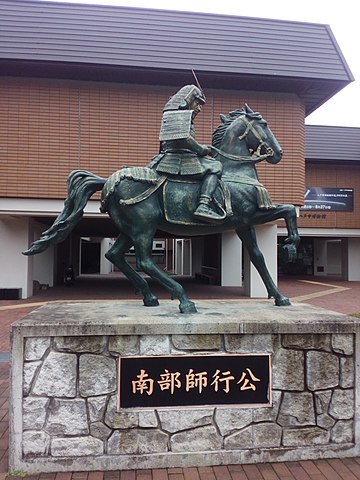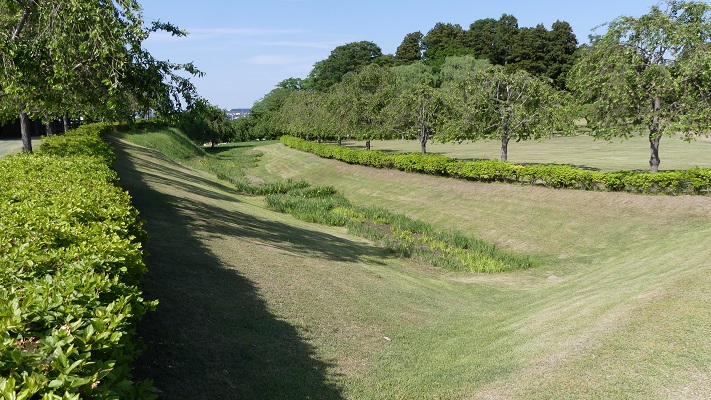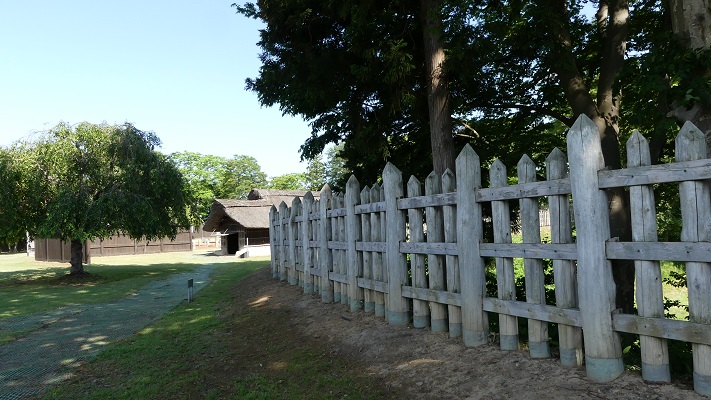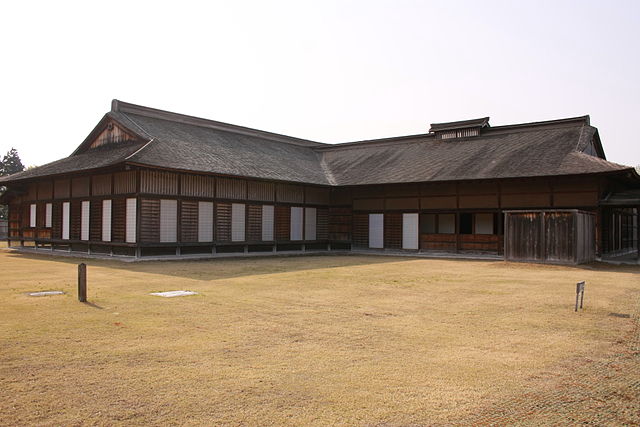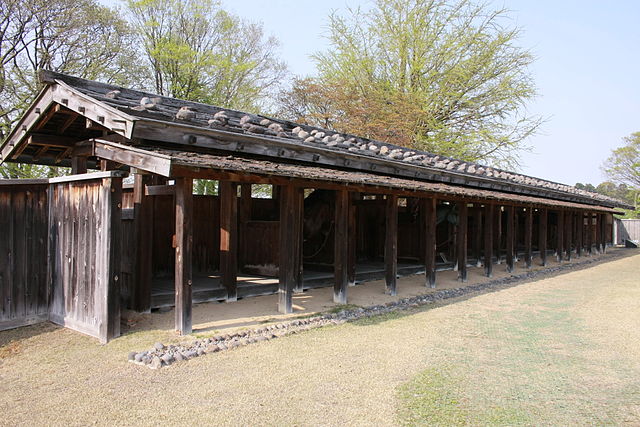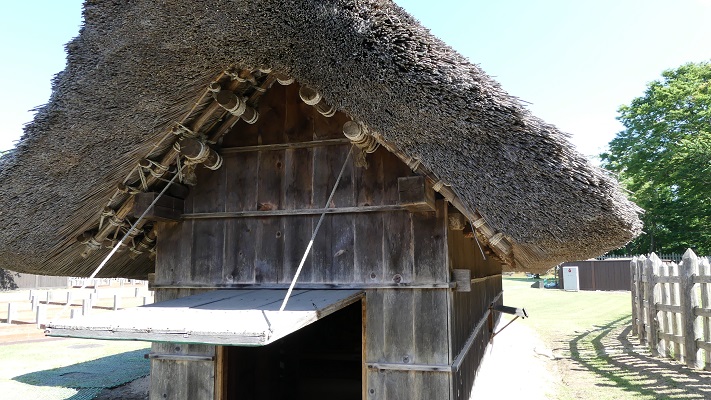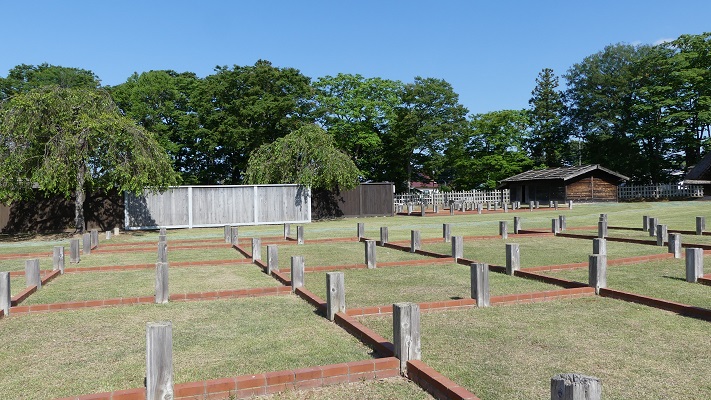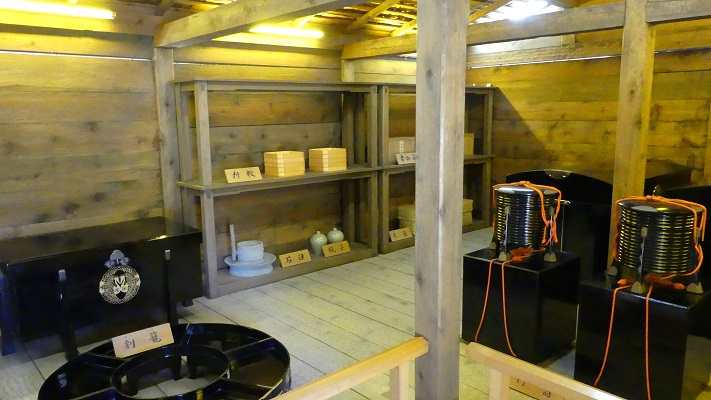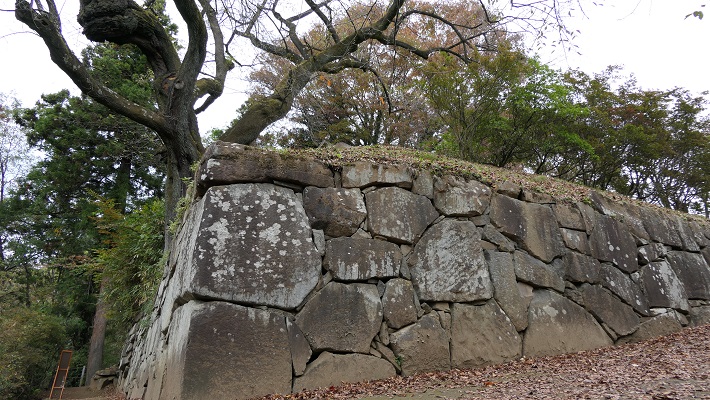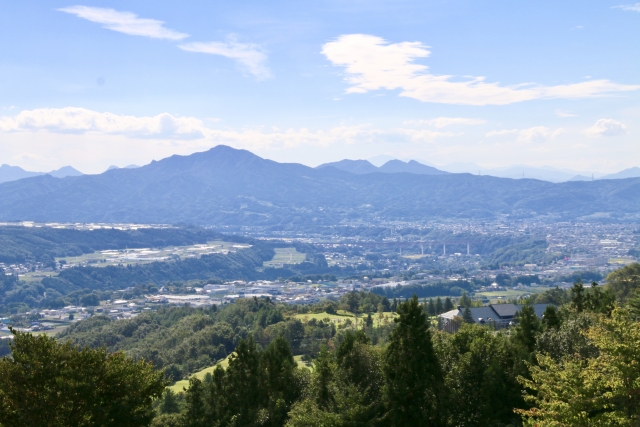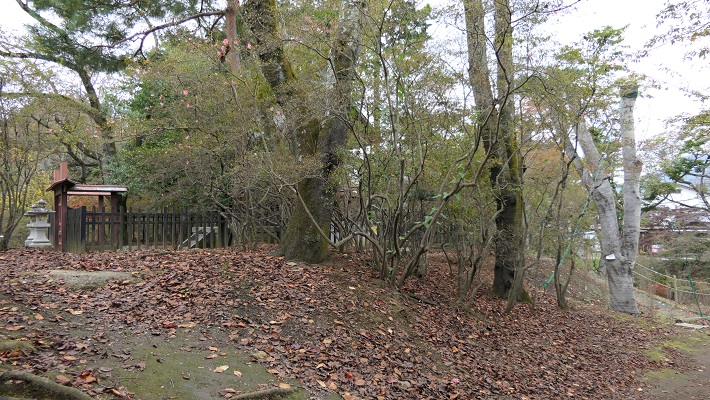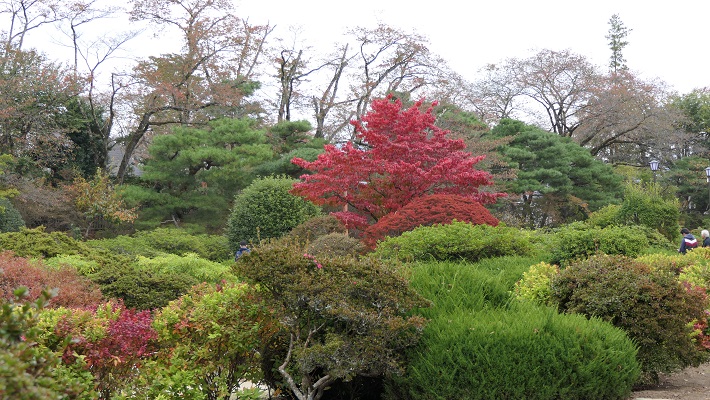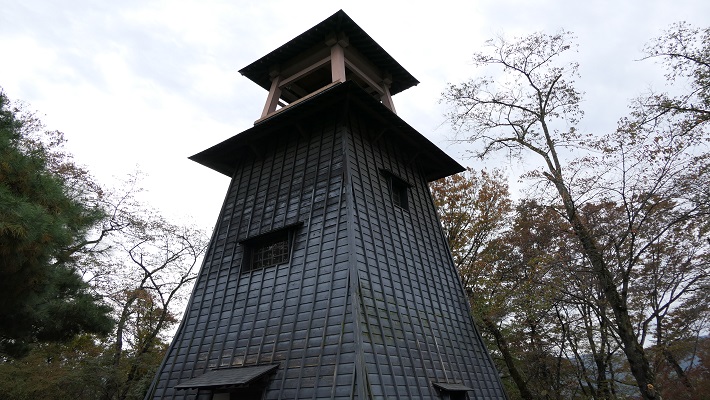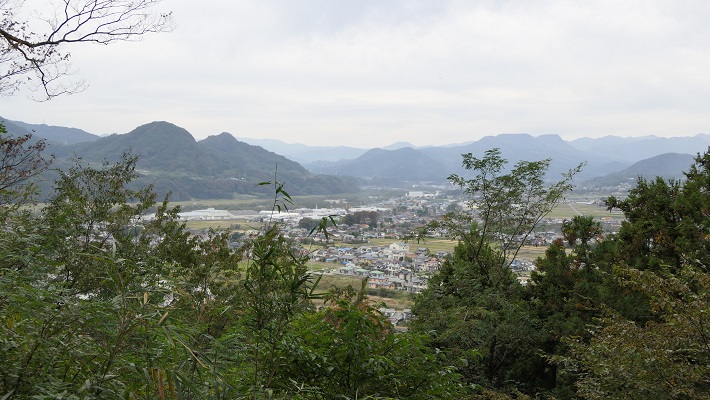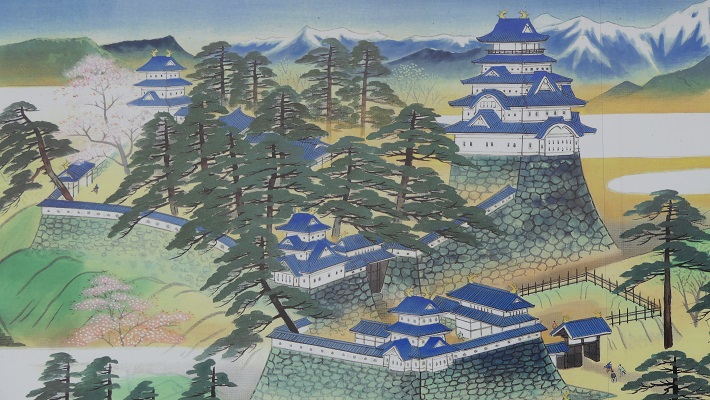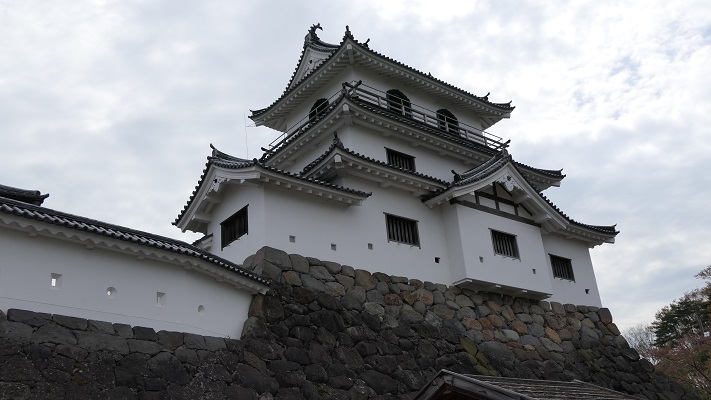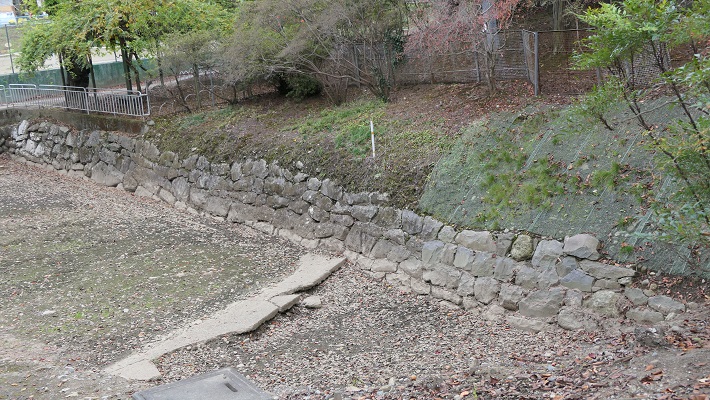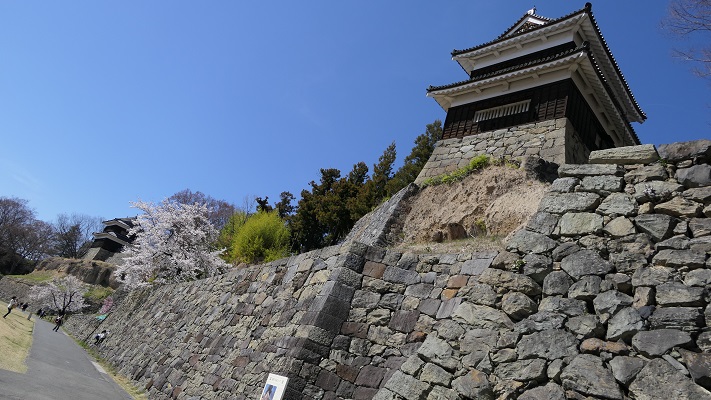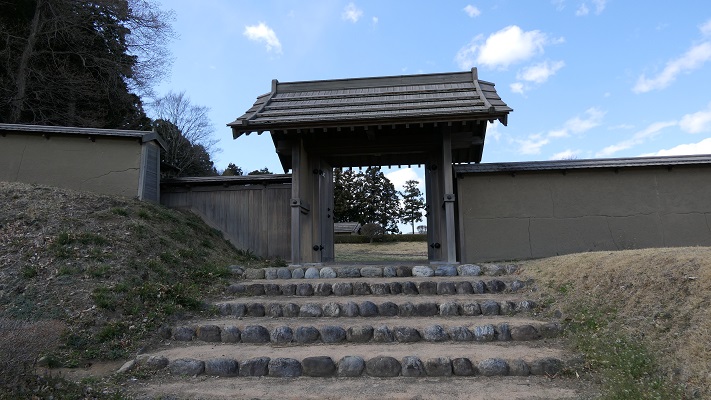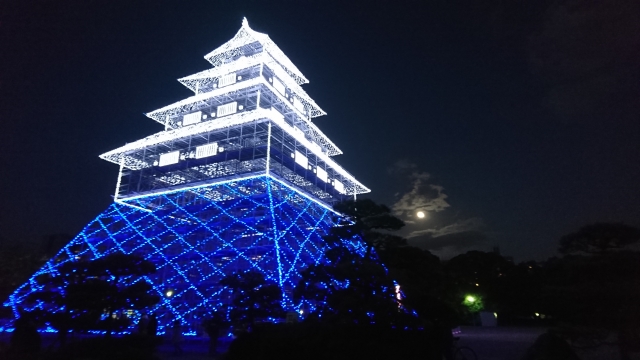盛岡城跡はまるで石作りの鎧をまとった武者のようです。
Morioka Castle Ruins look like a warrior wearing an amour made of stone.

Location and History
岩手県の県都である盛岡市は、この城から始まりました。盛岡はまた、この城の城主であった南部氏により名付けられました。この城はもともと北上川と中津川の合流地点の北側にある丘の上に築かれました。(現在、北上川は西の方角に付け替えられています。)
Morioka City, the capital of Iwate Prefecture, started from this castle. Morioka was also named by the lord of the castle, the Nanbu clan. The castle was originally located on a hill in the north of the meeting point of Kitakami River and Nakatsu River (Now, Kitakami River has been replaced in the western direction).

最新の城周辺の地図(The latest map around the castle)
南部氏は、北東北地方の有力な戦国大名の一族で、その運営は一族の合議によりなされてきました。三戸城の南部信直がやがて力を持ち、天下人の豊臣秀吉に南部氏の頭領であると認められました。
Nanbu clan had been a great warlord group in the north Tohoku region with their operations run by the relatives’ council. In the end of the Civil War Period, Nobunao Nanbu in Sannohe Castle had an influence, and he was allowed to be the head of the clan by the ruler, Hideyoshi Toyotomi.
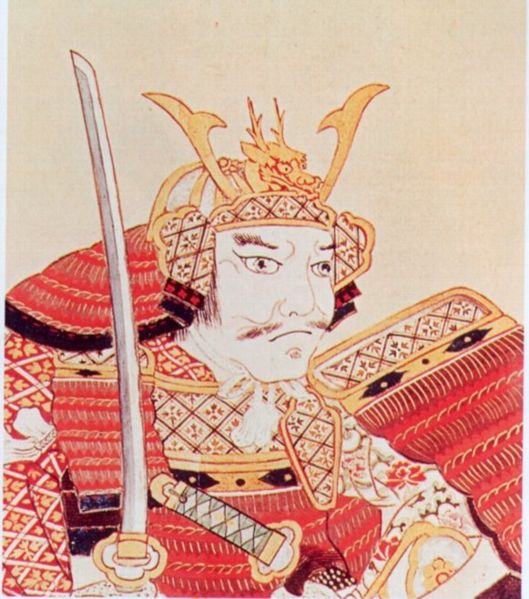
彼は、豊臣の配下である蒲生氏郷や浅野長吉らの助けを借り、九戸城で反乱を起こした一族の九戸政実を滅ぼしました。そして彼は一旦九戸城に移り、そこを「福岡」と名付けました。しかし福岡は南に広がっていた南部領にとって北にありすぎました。そこで蒲生や浅野は再度南の方に移るよう提案しました。それが不来方(盛岡の前の名前)だったのです。そこで信直は1598年から新しい城造りを始めました。
He beat a rebellious relative, Masazane Kunohe in Kunohe Casle with the help from Toyotomi’s men such as Ujisato Gamo and Nagayoshi Asano. Then, he once moved to Kunohe Castle and renamed it “Fukuoka”. But Fukuoka was too much on the north because Nanbu’s territory spread to the south. So, Gamo and Asano suggested Nobunao to move again to another southern place. That was Kozukata (the former name of Morioka) where Nobunao started to build a new castle in 1598.
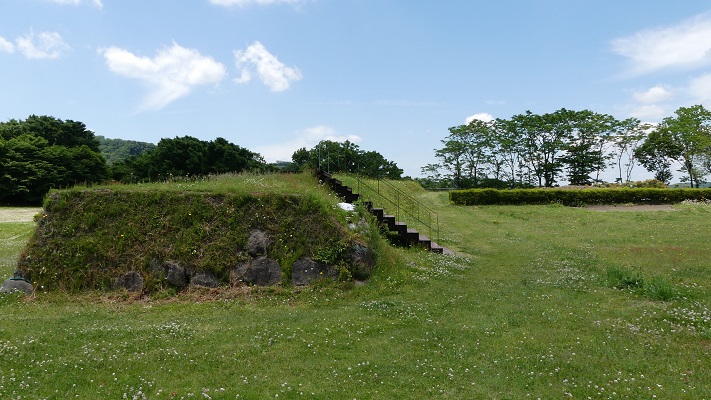
蒲生と浅野は更にその城を、西日本で一般的であった総石垣作りとするよう提案しました。その当時の東日本おいては、より強い防御力を持つ特別な城となったのです。城の建設には長い時間を要し、信直の息子、利直の代の1615年に完成しました。利直はそのとき不来方を盛岡と改名したのです。
Gamo and Asano also suggested to build the castle made up entirely of stone walls that was popular in the western Japan. That style would be more defensive and special in the eastern Japan at the point. The construction took a long time before its completion in 1615 by Nobunao’s son, Toshinao who renamed Kozukata, Morioka then.

南部氏は、江戸時代を通して盛岡城とその城下町を支配しました。城はしばしば火事、地震そして洪水の被害を受けましたが、その度に修復され、部分的には拡張されました。
Nanbu clan governed Morioka Castle and town all through the Edo Period. The castle sometimes suffered from fires, earthquakes and floods, but were repaired and partly improved.
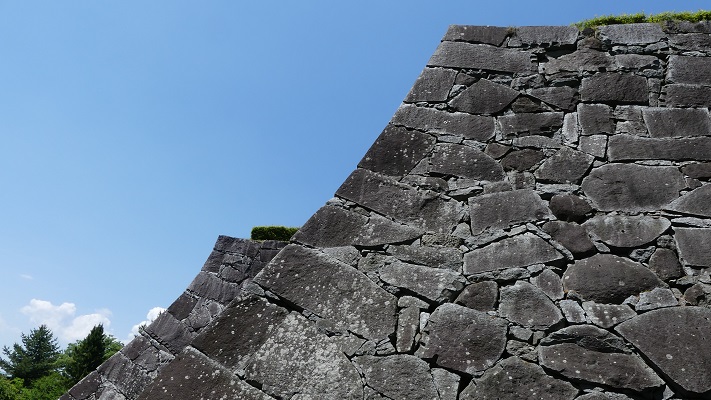
Features
現在、盛岡城跡には、たった一つ現存している「彦御蔵」を除いては、建物がない石垣だけが残っています。それでも石垣の存在は際立っています。城跡のどこに行っても素晴らしい石垣が見れます。全てが地元産の白花崗岩を使っています。それではいくつか代表例を見てみましょう。
Now, the ruins of Morioka Castle remain stone walls without buildings except for only one warehouse called “Hiko-Okura”, but they are even more outstanding. Wherever you get around the ruins, you can see amazing stone walls. They are all made of white granite locally produced. Let’s look at some typical stone walls we can see in the ruins.

盛岡城跡の地図、マーカーは以下の写真を撮った位置
(The map of Morioka Castle Ruins, Markers show the points pictures below were taken)
・本丸周りの石垣:基本的に自然石を積み上げ、隅石には加工石を用いており「野面積み」と呼ばれます。城跡では一番古く、築城が始まった直後に築かれたと考えられています。
・The main enclosure “Honmaru” surrounded stone walls: They consist of piled-up natural stones basically, and processed stones in the corner, called “Nozura-Dumi”. They are thought to be the oldest in ruins, and might have been made in the earliest time since the castle began to be built.

・腰曲輪石垣:ここに使われている石は粗く加工されてから積まれており、「乱積み」と呼ばれます。この方法は城が完成した時期に使われました。一部は最近元の方法で積み直されています。
・The bounded enclosure “Koshi-Guruwa” stone walls: These stones are roughly processed and piled called “Ran-Dumi”. The method was used around the same time as the castle was completed. Part of them were restored recently in the original way.

・二の丸西側石垣:四角くカットされた石を使い、整列させて積み上げたもので「布積み」と呼ばれます。17世紀になって北上川が付け替えられてから築かれました。
・The second enclosure “Ninomaru” west side stone walls: They are made with square cut stones and piled with aligning called “Nuno-Dumi”. They were added in the late 17th century, after the replacement of Kitakami River.
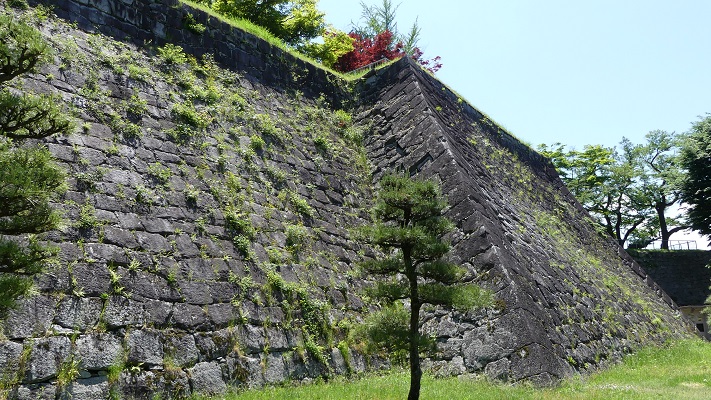
上記の通り、異なる時代や方法による様々な石垣があります。新しく進んだ方法による石垣がお好みとは限りませんよ。
As mentioned above, there are many types of stone walls from different times and methods. New and advanced ones are not always the best for you.
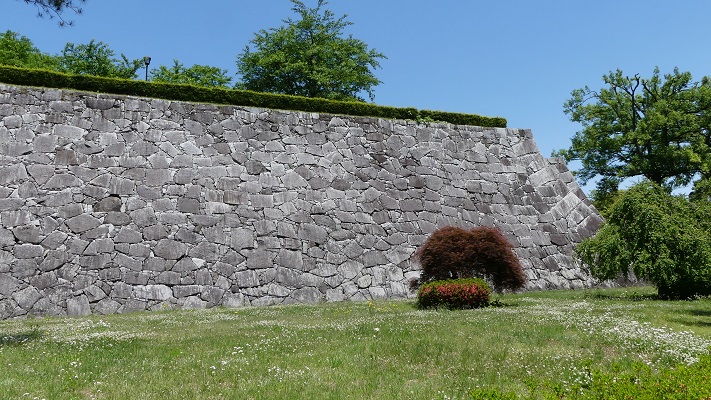
Later Life
明治維新後、城の建物は撤去されました。城は荒廃していき、周辺の人たちはそれを憂いました。そこで岩手県がその地を借り受け(後に盛岡市が購入)、岩手公園として1906年に一般に公開しました。城跡はまた、1941年に国の史跡に指定されました。
After the Meiji Restoration, the buildings of the castle were demolished. The castle went to ruin, people around were worried about it. Then, Iwate Prefecture rented it (Morioka City bought it later), and opened to the public as the Iwate Park in 1906. After that, the ruins were designated as a National Historic Site in 1941 as well.

My Impression
最近、盛岡市はこの公園に「盛岡城跡公園」という愛称を付けました。この主な理由は観光のためなのでしょうが、どうやら建物の再建を含めた城の復元方法を模索しているようなのです。私は将来も城跡をこのまま維持することが最善と思います。なぜなら石垣の上に建物が復元されてしまうと、人々の関心が分散してしまうからです。
Recently, Morioka City nicknamed the park “Morioka Castle Ruins Park”. The main reason for it should be for tourism, while the city seems to be searching for the way of restoring the castle including some buildings. I think that keeping the ruins is in the future would be the best way. Because if a building is restored on the stone walls, people’s interest might be destructed by them.
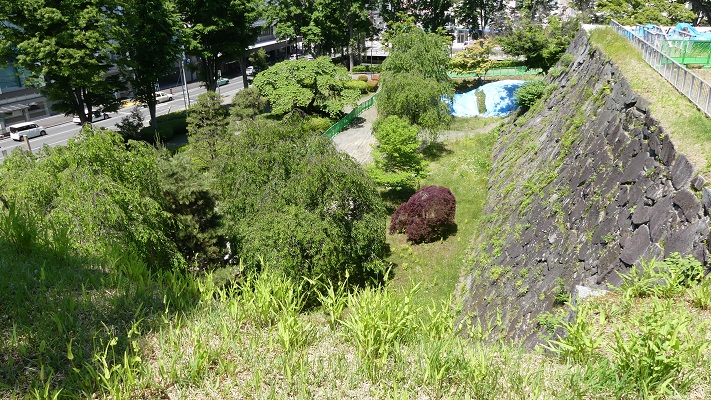
石垣に囲まれた城跡は、できてから400年以上経ちます。木々や植物のおかげで城跡はより美しく見えます。ある作家は、自身による石垣の写真に添えて「春は花、夏は緑、秋は紅葉、冬は雪」と述べています。
The ruins surrounded by stone walls are over 400 years old. Trees and plants help them look more beautiful. A writer says “Flowers in spring, green in summer, leaves in autumn, snow in winter” with his pictures of the stone walls.

How to get There
車で行く場合:東北自動車道盛岡ICから約10分です。城跡公園に地下駐車場があります。
盛岡駅からバスで行く場合:西口バス16番乗り場から循環バス「でんでんむし」に乗り、盛岡城跡公園バス停で降りてください。駅から歩くと約20分です。
東京から盛岡駅まで:東北新幹線に乗ってください。
If you want to go there by car: It takes about 10 minutes from the Morioka IC on Tohoku Expressway. The park offers an underground parking lot.
If you want to go there by bus from Morioka station: Take the Den-Den-Mushi bus at the east exit bus terminal bus stop No.16, and take off at the Morioka-Joato-Koen bus stop. Or it takes about 20 minutes on foot from the station.
From Tokyo to Morioka st.: Take the Tohoku Shinkansen super express.
Links and References
・盛岡城跡公園(岩手公園)~盛岡市(Morioka Castle Ruins Park (Iwate Park)~Morioka City)
・「史跡盛岡城跡整備基本計画/盛岡市」(Japanese Document)
・「盛岡城の石垣/高橋喜平」(Japanese Book)



